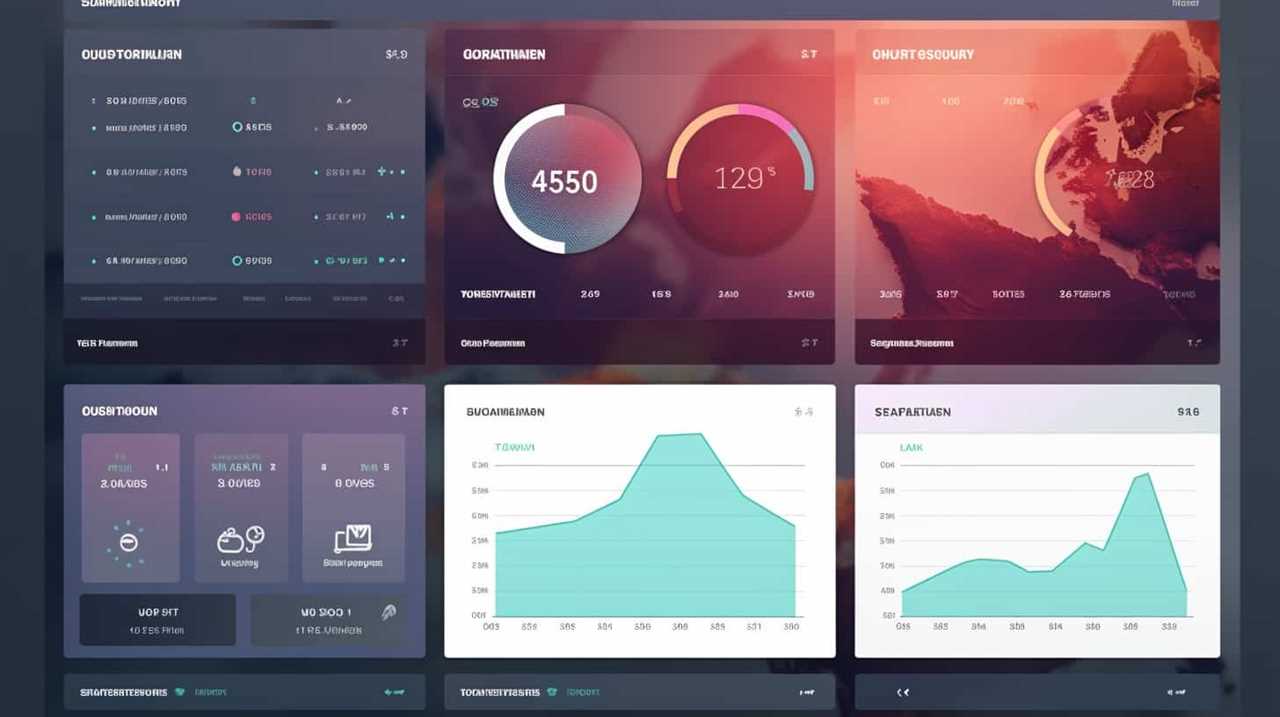To use APIs and Python for technical SEO data analysis, start by setting up your development environment, installing Python, and configuring necessary libraries like requests and pandas. Access data through tools like Google Search Console API and third-party SEO platforms, then clean and process the data using Python scripts. Automate your analysis and visualization workflows to generate insights efficiently. Keep exploring this guide, and you’ll discover how to optimize your SEO strategies with automation.
Key Takeaways
- Set up API access (e.g., Google Search Console API) and authenticate using Python libraries like requests or google-api-python-client.
- Collect SEO data such as rankings, backlinks, and crawl errors by querying APIs with customized parameters.
- Clean and standardize data using pandas, handling missing values, outliers, and date formats for consistency.
- Automate data retrieval and analysis workflows with Python scripts, enabling real-time monitoring and reporting.
- Visualize insights with libraries like Matplotlib or Seaborn, and schedule regular updates for proactive SEO management.
Setting Up Your Development Environment

To begin analyzing SEO data with Python and APIs, you need to set up your development environment properly. Start with IDEA GENERATION by defining the goals for your SEO analysis, which will guide your technical setup. Install Python if you haven’t already, and choose a suitable IDE like VS Code or PyCharm to streamline your workflow. Next, verify you have the necessary libraries, such as requests and pandas, for API interactions and data handling. Setting up virtual environments helps keep dependencies organized. Confirm your API credentials are secure and ready for use. A well-planned technical setup minimizes errors and accelerates your analysis process. With a solid environment in place, you’re ready to connect to APIs and start extracting valuable SEO insights efficiently.
Understanding the Role of APIs in SEO Data Collection

APIs serve as essential tools that enable you to access and retrieve SEO data directly from various platforms and search engines. By leveraging API integration, you can automate data retrieval processes, making it easier to gather large volumes of information efficiently. This direct connection allows you to bypass manual exports and guarantees your data stays current. APIs provide standardized methods for accessing metrics like rankings, backlinks, and crawl errors, giving you a thorough view of your website’s SEO performance. As you integrate APIs into your workflow, you gain the ability to streamline data collection, reduce errors, and save time. Understanding the role of APIs in SEO data collection helps you build a more effective, automated, and scalable analysis process. Additionally, incorporating essential tools like APIs enhances the accuracy and comprehensiveness of your SEO insights. Implementing secure cybersecurity measures is crucial to protect the integrity of your data and prevent adversarial attacks that could compromise your SEO analysis. Proper API authentication ensures that your data remains protected and accessible only to authorized users. Utilizing standardized data formats further facilitates seamless integration and data analysis across different platforms. Furthermore, understanding privacy policies related to data collection ensures compliance and builds trust with your users.
Accessing Google Search Console Data via API

To access Google Search Console data via API, you’ll need to set up proper API access and authenticate your requests. Once connected, you can craft queries to retrieve specific search performance metrics. This process allows you to automate and streamline your SEO data analysis efficiently.
Setting Up API Access
Before you can analyze your Google Search Console data with Python, you’ll need to set up API access. This involves enabling the API and completing API authentication to guarantee secure data access. First, visit the Google Cloud Console, create a project, and enable the Search Console API. Then, generate credentials—usually a service account key or OAuth client ID—that allow your script to access the data securely. Here’s a quick overview:
| Step | Action | Result |
|---|---|---|
| Enable API | Turn on Search Console API in Google Cloud | API available for data access |
| Create credentials | Generate API keys or OAuth tokens | Secure access to your account |
| Download file | Save credentials locally for your script | Ready for API authentication |
Once done, you’ll be ready to connect Python with your Search Console data securely. Additionally, understanding API authentication is crucial for maintaining data security and proper access controls during your analysis, especially since security protocols are vital when handling sensitive data. Properly managing API credentials ensures only authorized access, safeguarding your data from unauthorized use. Furthermore, understanding content security is essential for protecting your data throughout the entire process. Being aware of potential security vulnerabilities helps in implementing best practices for safeguarding your data effectively.
Querying Search Console Data
With your API access set up and credentials in hand, you can now start retrieving data from Google Search Console directly into your Python environment. Use the API’s query parameters to target specific data, such as clicks, impressions, CTR, and position. This allows for efficient query parameter optimization by customizing requests to focus on valuable pages or keywords. This enables a more precise focus on search performance metrics, allowing you to identify pages that need improvements or adjustments to enhance crawl budget management, ensuring Google spends its crawl resources more effectively. Automating these queries repeatedly helps track performance trends and spot issues early. Remember to set appropriate date ranges and filters to refine your data. Additionally, incorporating content quality metrics can provide deeper insights into how content performance influences search rankings. Regularly analyzing user engagement data can help optimize content strategies for better visibility. Furthermore, understanding crawl budget management enables you to prioritize high-value pages for indexing, improving overall SEO efficiency. This approach streamlines your SEO analysis and supports strategic decision-making for better site visibility. Cookies and other tracking mechanisms can also be utilized to gather additional insights about user interactions and site performance, further informing your SEO strategies.
Extracting Data From Third-Party SEO Tools

Extracting data from third-party SEO tools often involves leveraging their APIs or exporting reports in formats like CSV or JSON. This approach allows you to gather valuable insights for keyword research and backlink analysis. Many platforms, such as Ahrefs, SEMrush, and Moz, provide API access that lets you automate data retrieval, saving time and reducing errors. With Python, you can write scripts to authenticate, query, and store this data efficiently. For example, you can extract ranking positions, backlink profiles, or keyword volumes directly into your workflow. Exported reports in CSV or JSON formats are also easy to process with Python’s built-in libraries. This method streamlines data collection, enabling more extensive and timely SEO analysis. Additionally, employing holistic SEO strategies ensures that your data-driven optimizations align with overall site relevance and authority. Understanding API documentation is essential for effective integration, as well as adhering to platform usage limits and best practices. Incorporating automated data workflows can further enhance your efficiency and accuracy in SEO analysis. Furthermore, considering support for different data formats allows for greater flexibility in handling various report types and sources. Moreover, staying updated on API changes helps maintain the reliability of your data extraction processes.
Processing and Cleaning SEO Data With Python

When processing SEO data with Python, you need to standardize data formats to guarantee consistency across datasets. Handling missing values properly prevents inaccuracies, while removing outliers helps maintain data quality. Residency requirements are an essential consideration for accurate analysis and reliable insights. Incorporating data cleaning techniques into your approach can also inspire innovative ways to interpret and utilize your data more effectively. Additionally, understanding the application timing of data points, such as pimple patches, can enhance your analysis by aligning data collection with optimal conditions. Recognizing mental and emotional well-being can also improve your overall approach to personal development, leading to more balanced and effective insights.
Data Format Standardization
Standardizing data formats is a crucial first step in cleaning SEO data with Python. When you focus on data format standardization, you guarantee consistent units, date formats, and text structures across your dataset. This process improves data consistency, making analysis more reliable and reducing errors. For example, converting all dates to a single format (like YYYY-MM-DD) helps you compare time-based metrics accurately. Similarly, standardizing text case and removing extraneous characters ensures uniformity. Using Python libraries like pandas, you can quickly transform varied data formats into a cohesive structure. This foundation allows you to perform deeper analysis without being hindered by inconsistent data entries. Additionally, data validation techniques can further ensure accuracy and integrity of your cleaned data. Incorporating error handling during data processing minimizes the impact of unexpected data discrepancies, enhancing your overall data quality. Ultimately, data format standardization streamlines your workflow and enhances the quality of your SEO insights.
Handling Missing Values
Handling missing values is a key step in cleaning SEO data with Python, ensuring your analysis remains accurate and reliable. First, you need to detect missing values using missing value detection techniques like pandas’ isnull() or isna(). Once identified, you can choose appropriate data imputation methods to fill these gaps, such as filling with mean, median, or mode, depending on data distribution. Alternatively, for more complex cases, you might opt for advanced imputation techniques like K-Nearest Neighbors or regression models. Proper handling of missing data prevents biases and inaccuracies in your analysis. Remember, the goal is to maintain data integrity while minimizing information loss. By systematically detecting and imputing missing values, you set a solid foundation for meaningful SEO insights.
Removing Outliers Effectively
Removing outliers is a crucial step in cleaning SEO data with Python because they can distort analysis and lead to misleading conclusions. Statistical outliers are data points that fall far outside the normal range, skewing results and affecting data interpretation. To address this, you can use methods like z-score or IQR to identify these anomalies effectively. Once identified, decide whether to remove or adjust outliers, depending on your analysis goals. Data normalization techniques, such as Min-Max scaling, help guarantee that outliers don’t disproportionately influence your models. By cleaning outliers thoughtfully, you improve data quality and gain more accurate insights, making your SEO analysis more reliable and actionable. Python libraries like Pandas and SciPy make this process straightforward and efficient.
Analyzing Site Performance Metrics Programmatically

Analyzing site performance metrics programmatically allows you to gain real-time insights into your website’s health and effectiveness. Using APIs and Python, you can automate keyword tracking to monitor how your target keywords rank over time, identifying shifts that may impact your SEO strategy. Backlink analysis becomes more efficient, enabling you to evaluate the quality and quantity of backlinks, which influence your site’s authority. By fetching data regularly, you can detect sudden drops or improvements in key metrics like organic traffic, bounce rate, and page load times. Automating these processes saves time and provides a clearer picture of ongoing SEO efforts, allowing you to make informed decisions quickly. This approach empowers you to stay ahead of ranking fluctuations and optimize your site proactively.
Automating Reports and Visualizations for SEO Insights

Automating reports and visualizations transforms raw SEO data into actionable insights with minimal effort. By scripting dashboards and scheduled updates, you can monitor keyword tracking and backlink analysis efficiently. Python libraries like Matplotlib and Seaborn help create clear visualizations, while pandas streamlines data handling. Automating these processes guarantees your SEO team stays informed without manual effort. Here’s an example of key metrics you might track:
| Metric | Description | Frequency |
|---|---|---|
| Keyword Rankings | Positions for target keywords | Daily |
| Backlink Quantity | Total backlinks gained/lost | Weekly |
| Top Referring Sites | Most frequent backlink sources | Monthly |
| Organic Traffic | Visits from search engines | Daily |
| Crawl Errors | Site accessibility issues | Weekly |
This setup boosts efficiency and provides real-time SEO insights.
Handling Common Challenges and Error Management

While automating SEO reports enhances efficiency, it also introduces potential challenges that can disrupt your workflow. One key aspect is effective error logging, which helps you identify issues quickly. When your script encounters unexpected data or API limits, exception handling becomes essential. Use try-except blocks to catch errors and prevent crashes, allowing your program to continue running or provide meaningful feedback. Logging errors with detailed messages helps you diagnose problems later. Remember to handle common issues like network timeouts, invalid responses, or missing data gracefully. Incorporate robust error management strategies to ensure your automation remains reliable and resilient. By proactively managing errors, you minimize downtime and maintain consistent, accurate SEO data analysis.
Integrating Automated SEO Data Workflows Into Your Strategy

To effectively incorporate automated SEO data workflows into your strategy, you need to align your automation tools with your overall marketing goals and operational processes. Start by integrating keyword tracking into your daily routines, ensuring you monitor rankings and identify opportunities quickly. Automate competitor analysis to stay ahead by regularly pulling data on their backlink profiles, content strategies, and keyword performance. Use APIs and Python scripts to streamline these tasks, reducing manual effort and minimizing errors. Establish clear workflows that trigger data collection, analysis, and reporting at scheduled intervals. This allows you to make data-driven decisions with confidence. By aligning automation with your strategic objectives, you enhance your ability to adapt rapidly and stay competitive in search rankings.
Frequently Asked Questions
How Can I Ensure API Data Accuracy for SEO Analysis?
To verify API data accuracy for SEO analysis, you should focus on data validation by cross-checking API responses with other reliable sources and setting validation rules. Implement error handling to catch and manage issues like incomplete data or API timeouts. Regularly review and update your validation processes, and log errors to identify recurring problems. This approach helps maintain trustworthy data, leading to more accurate and actionable SEO insights.
What Are Best Practices for Managing API Rate Limits?
Think of managing API rate limits like steering a busy highway; you need to avoid traffic jams. To do this, implement API throttling and quota management, spreading your requests over time, and respecting the limits set by the provider. Use retries with exponential backoff for failed requests, monitor your usage regularly, and set alerts. This approach keeps your data flowing smoothly without hitting the brakes due to exceeded quotas.
How Do I Authenticate Securely With Multiple SEO APIS?
To authenticate securely with multiple SEO APIs, you should focus on API key management and OAuth security. Store your API keys securely, avoiding hardcoding them in your code, and use environment variables or secrets managers. For OAuth, implement token refresh mechanisms and follow best practices to safeguard access tokens. This approach guarantees your credentials stay protected while maintaining smooth, secure interactions with multiple APIs.
Can I Combine Data From Different APIS Effectively?
Yes, you can effectively combine data from different APIs through data merging and API integration. First, verify each API’s data is structured consistently, then fetch and normalize the data. Use Python to merge datasets based on common keys, like URLs or keywords. This approach helps you create a thorough view of your SEO metrics, making data analysis more insightful and actionable. Proper data merging streamlines your SEO strategy.
What Are Common Python Libraries for Visualizing SEO Data?
You’ll want to explore Python chart libraries like Matplotlib and Seaborn for effective data visualization. These libraries let you create clear, insightful charts that help you interpret SEO data easily. Plotly is another excellent option for interactive visualizations, making your SEO analysis more engaging. By leveraging these chart libraries, you can turn complex SEO data into visual stories that drive better decision-making.
Conclusion
By leveraging APIs and Python, you can automate your SEO data analysis and uncover valuable insights faster. Did you know that 70% of marketers report improved decision-making after automating data workflows? Embrace these tools to streamline your strategy, save time, and stay ahead of the competition. With the right setup, you’ll turn complex data into actionable SEO opportunities—making your efforts more effective and data-driven.









